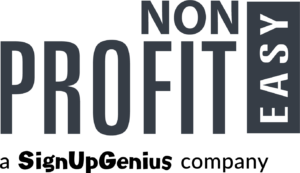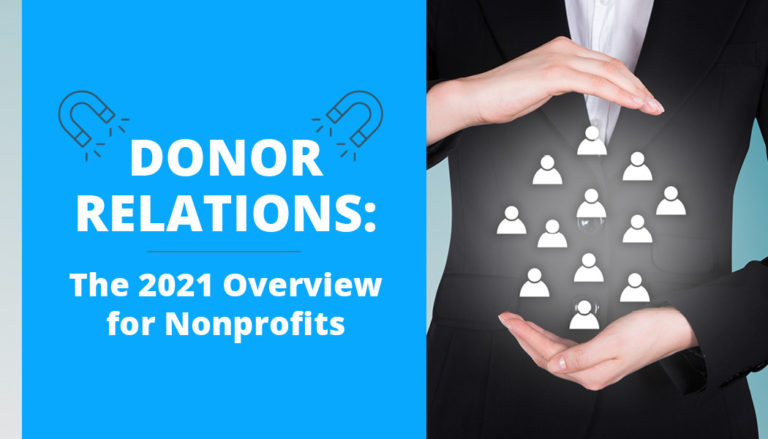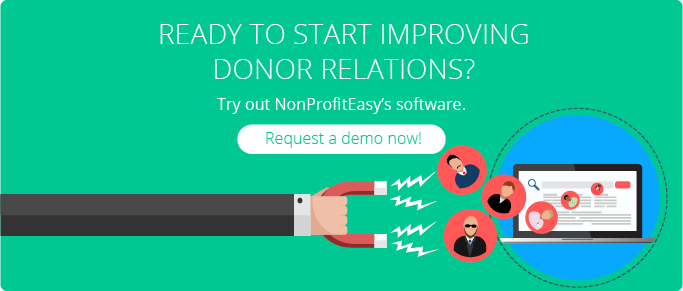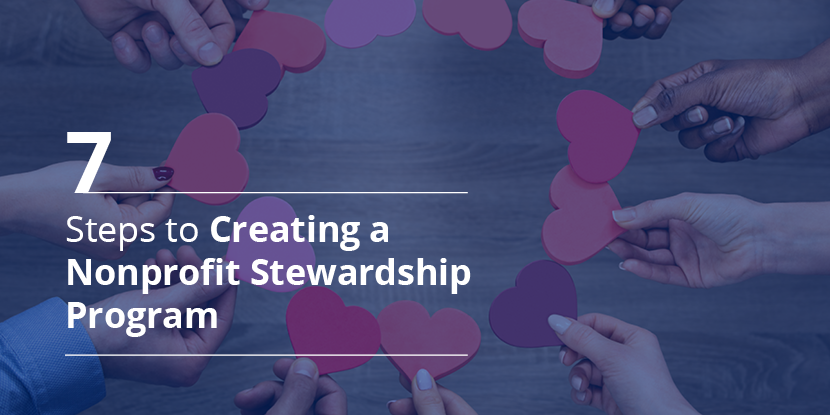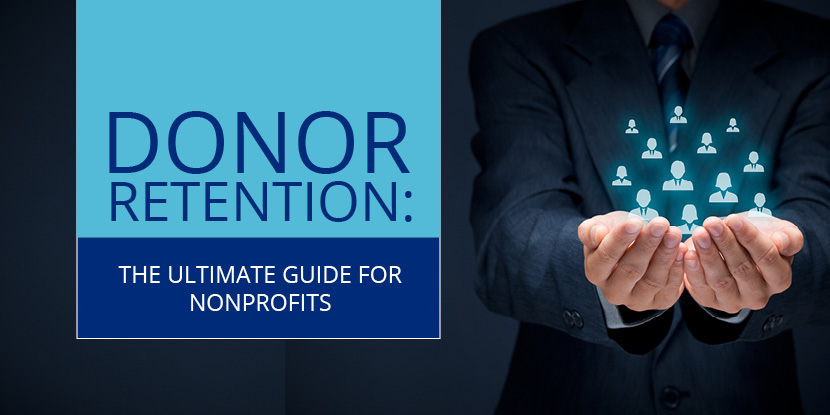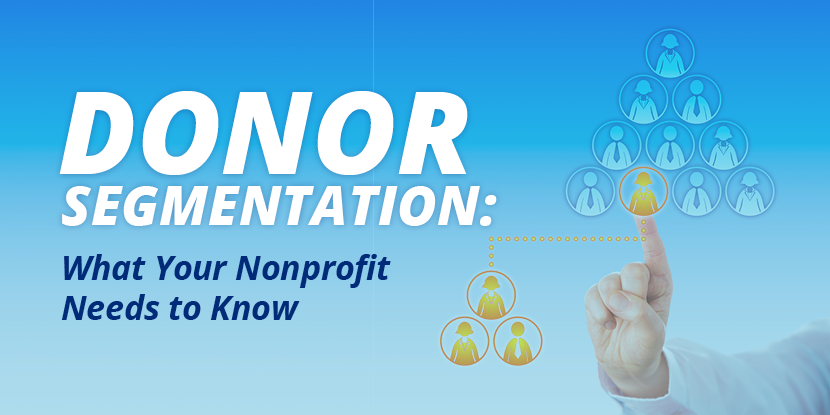Without your donors, you wouldn’t be able to do the work that matters so much to your organization and your supporters. Truly, it’s not just the donations that matter. A strategy focused on getting as many one-time donations as possible is not going to be as effective as building lasting relationships with donors who truly care about your cause and your organization.
Instead, you should invest plenty of time and attention in your donor relations strategies.
So how do you create those relationships? We’re going to go over everything you need to know for building strong donor relationships:
With our best practices and guidance, your donors will know how much you appreciate their support and will want to continue supporting an organization that supports them in return. Are you ready to step up your donor relations? Let’s get started.

The Importance of Donor Relations
Without donors, the work of nonprofits wouldn’t be possible. But donors aren’t just faceless dollar signs; it’s crucial to build authentic relationships with them. Donor relations involve every engagement and aspect that makes up your donor relationships including:
- Communications
- Events
- Marketing efforts
- Social media presence
- Gift history
Donor relations are the comprehensive efforts of any nonprofit to ensure that donors experience high-quality interactions with their organization that foster long-term engagement and investment.
If you want to increase your donor retention and acquisition rates, a focus on donor relations is critical.
Benefits of a Dedicated Donor Relations Strategy
The main benefit of positive donor relations is an increase in donor retention. Once you establish a strong reputation as an engaging organization, your donor relations will help you more easily acquire new donors, too. However, there are other benefits that stem from this. As an organization, strong donor relationships will only serve to further your cause.
Donor relationships can open up the arena for bigger support, like:
- Major donors
- Corporate sponsorships
- Matching gifts
- Recurring donors
- Volunteers
- Advocates
Putting in the time to better your donor relationships will never be something you regret. Whether it secures you a new major donor or simply re-engages some of your supporters, it’s always worth the effort! Keep reading to explore five best practices for drastically improving your relationships with your valued donors.

5 Best Practices to Take Your Donor Relations to the Next Level
Just because donor relationships are a crucially important element of your organization’s strategy for success doesn’t mean building them has to be difficult. We’re going to explore how you can improve your donor relationships through donor retention, communication, segmentation, and appreciation as well as how software and your donor data can help!
Donor Retention
Donor retention is an important practice for nonprofits that helps them keep their current donors engaged rather than constantly churning donors. While it can reduce donor acquisition costs, increasing efforts to retain donors does not only benefit your organization. Retaining donors is also a much more effective method for building stronger relationships than starting from scratch with new donors. It shows your donors that you value their involvement with your organization beyond an individual fundraiser. You should, of course, still be recruiting new donors and building relationships with them. However, your efforts will have a higher return if you are also retaining donors.
Here are a few ways that you can work towards retaining more donors:
- Assign a team or individual focused on donor retention. It can be easy to let initiatives like this slip through the cracks. Having a dedicated person (or persons) to keep track of how your donor retention efforts will help you be much more effective.
- Invest in technology to track donor retention rates. Using software to ensure accuracy and allow for some automation will help keep your organization on track with your goals. Tracking data should not be more labor-intensive than the work put in to address the problem – technology will allow your team to focus on what matters.
- Ask for feedback in surveys and other points of communication. The data you’re keeping track of can be immensely valuable in revealing weak points, but it is still only quantitative data. For a fully comprehensive look at your current donor relations, you also want to have qualitative data. Take the time to speak with donors about what they feel is and isn’t working and how they perceive your current actions and communications.
For donors to continue offering support they have to see value in their contributions – whether it gives them community, expands their network, or simply gives them fulfillment. Successful donor relationships are symbiotic and lead to increased donor retention.
Donor Communications
Consistent and valuable communication is the most direct way to improve donor relations. In order to do this, you’ll need to ask yourself a few questions like “what do donors actually want to talk about?” and “what communications are they interested in?”
When writing donation letters, you want to go beyond the bare minimum and ensure that donors actually want to open your message. Take into consideration whether or not you’re doing these best practices and which ones you could implement:
- Ask donors for their communication preference (both channel and frequency).
- Segment donors based on common traits to create more targeted communications.
- Personalize communications with names, gift amounts, and other personal data taken from CRM.
- Use easily readable text in all messages and graphics.
- Connect with someone’s pre-existing values and experiences.
- Include a clear call to action (donate, sign up for an event, etc) in your communications.
- Leverage images or graphics to make your message more engaging.
How you speak to your donors, verbally and virtually, is one of the most crucial building blocks for how they perceive your organization. Even with less personal communications, like marketing materials, you should have a clear idea of what language your donors will respond to and where to reach them. Ensuring that you are on the right path towards a positive donor relationship starts with strong, donor-centric communication.
Donor Segmentation
Once you’ve applied some of the communication best practices we outlined, the next step is to start personalizing your messaging. This doesn’t mean you have to write a separate email for every donor, but it does mean that you should start targeting your communications to different segments of your audience and tailoring the message for them. Here are some tips for segmenting your donors for communication purposes:
- Assign meaningful donor segments. This can be based on personal traits like demographics, location, age, or on other factors such as whether they are new, recurring, or lapsed donors. You could also focus on the length of membership and level of engagement to help you segment.
- Create strategies for different donor segments. The purpose of segmenting your donors is to be able to send more targeted communications that are relevant to them. Your long-time donors don’t need to be receiving emails that aim to turn one-time donors into long-term donors. Using different strategies to determine the content best suited for different segments. This will result in more effective communications that help you reach your goals.
- Regularly revisit your segment lists. If your targeted communications to re-engage donors who are not as active are working, these lists should change. You should be revisiting your segmentation regularly to make sure your donors are still getting communications that are relevant to them.
- Analyze engagement by donor segments. Since you’re using different strategies for different segments, it’s important to know how effective those strategies are. If one segment now has a much higher open and engagement rate than another after you implemented a new strategy, there is likely something you can learn from that and apply to other segments.
- Address the needs of each segment. Depending on how you have segmented your audience, you’ll need to adjust your communication methods for each segment. If you’ve segmented primarily by demographics like age, the language you use and the donation amounts you ask for might differ. Alternatively, if you’ve segmented by their duration of involvement with your organization, you might provide different levels of background information for newer supporters versus long-time supporters who are already very familiar with your organization. This won’t make up your whole strategy, but it does tie in with the communication strategies you’re creating for different segments.
Here’s a valuable donor relations tip: everyone likes to feel like they’re getting a message crafted just for them. That’s what you want to convey to your supporters through your communications that are specific to individual segments of your audience. The more your donors feel they are being spoken to, the more they’ll connect with your message and feel an affinity to your organization.

Donor Appreciation
A key component of keeping your donors engaged with your organization is making them feel appreciated. When your donors feel like they are making a difference and know that their contributions are appreciated, they are much more likely to be inspired to keep donating. Here are a few ways you can thank your donors:
- Call your donors. This is a simple, yet effective, donor recognition idea. This is much more time-consuming than some other methods of saying thank you but is also much more personal.
- Create a “thank you” video. After a large fundraising event, it is often easier to thank all of your donors at once. A heartfelt and creative video can be a perfect way to do this. You can post it on your website, send it directly to donors, and post it on social media.
- Write a “thank you” letter. You don’t have to reinvent the wheel to show your appreciation! A classic thank you letter can go a long way, especially if it’s handwritten. If you don’t have time to handwrite every letter, consider at least including a signature to add that personal touch.
- Mention donors on social media. Thanking your donors publicly can make them feel extra appreciated. If you tag them, it’s also an opportunity for increased visibility if they share it.
- Send photos and share stories. If your supporter’s donation went directly to a specific project or to an individual, show them! It can be very meaningful to donors to have a memento of what their money helped achieve. Whether that was helping build a new facility or providing meals for a child, sharing the story will make them proud of their contribution.
- Send gifts or tokens. These can be small pieces of merchandise that many donors get during a specific fundraising campaign or they can be larger gifts personalized for major donors.
- Design memorable experiences. When the end of the year rolls around, a memorable way to thank your donors is to throw an event in their honor. It doesn’t have to be incredibly fancy and expensive, but it should show that you’ve put thought into it and worked to create an experience for them.
Thanking your donors is not only important for maintaining good donor relationships but it’s also just a kind thing to do! Always take the time to thank them properly and do so promptly!
Donor Data & Software
The easiest way to work on all of the strategies we’ve outlined so far is to have a strong foundation of information about your donors and their current behaviors to build your strategy on.
But data can certainly seem very daunting, especially for smaller nonprofits just getting started. That’s why it’s important to set yourself up for success with donor database software that will take the hard work out of donor data management. Here are our best tips for collecting and using donor data to improve donor relations:
- Use an integrated donor management system. This includes your donation tool, CRM, website, communications tool, etc. This ensures that data flows freely through systems and can be used together
- Compile regular reports. Tracking the performance of campaigns will help give you useful insight to improve your projects in the future.
- Set Key Performance Indicators (KPIs). These will help you to better understand what engagement is falling short at a glance. For example, how many of your donors also volunteer, or the open rate of the emails you send to donors.
- Use data to improve future donor relations strategies. Once you’ve structured a data reporting system that works for you, use that data to inform your decisions and move in a positive direction.
Picking the right donor management software to start is important but making sure you’re actually using that data to strategize and make future decisions is what will make the difference.
How can Nonprofit Easy improve your nonprofit donor relations?
NonProfitEasy is an all-in-one CRM and donor management solution that will make it a breeze for you to collect and manage donor data. When it comes time to form your new donor relation strategy, you’ll have everything you need.
NonProfitEasy’s communication features will allow you to send custom newsletters quickly and easily to the right donors through donor segmentation. Combined with the stand-out donor management features of our software, it will be easier than ever to manage your database. With NonProfitEasy, you get unlimited users and workflows in addition to the following features:
- Search tools with smart tags & custom fields
- Wealth Profiles
- Text-to-Give
- No-Fee Event Tickets
- Unlimited Email Blasts & E-Appeals
- Pledge Tracking
- Grant Management
- Donor Segmentation
NonprofitEasy allows you to devote more money to your mission, keep your database clean, collect valuable insights, and ultimately promote donor relations! Set yourself up for success with a CRM that helps you build genuine relationships with your donors while running your organization.
Wrapping Up
With all of the tips we’ve shared, donor relations and even donor data management should feel much less daunting. If you build from a strong base of well-managed data and are intentional with your communication strategies, your donors will be able to tell how much effort you’re putting into your relationship with them. Good luck!
If you’re looking for more resources to guide you as work to improve your donor relations, take a look at these additional resources:
-
Ultimate Guide to Donor Retention. Learn more about how to craft a strategy focused on donor retention.
-
Donor Database Buyer’s Guide | How to Choose Your Software. Get more guidance on picking the best donor database for your organization.
- Volunteer Retention | 10 Ways to Keep and Engage Supporters. Volunteers are just as important as donors! Learn how to improve volunteer retention.
